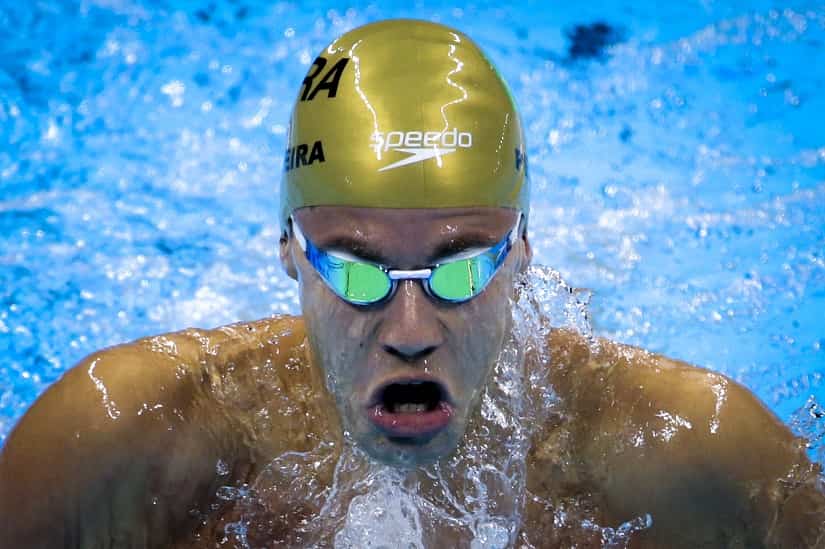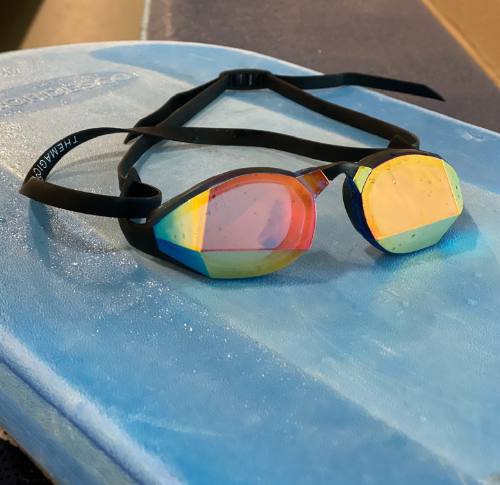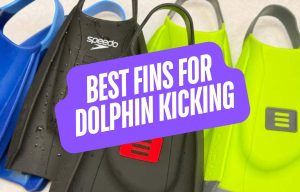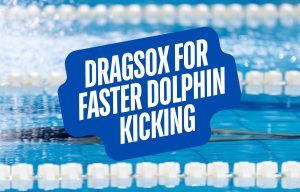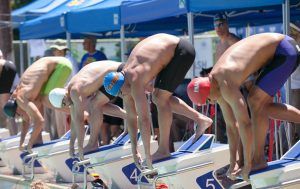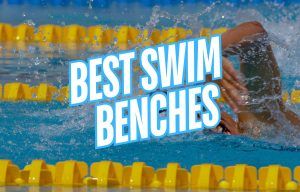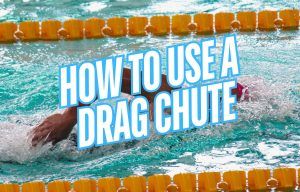Swimming goggles have come a long way since the beginning of our sport. Here is a look back at where swim goggles came from, how they continue to play a key role in swimming performance, and also what you need to know about picking swim goggles that suit your and your swimming.
The swim goggle is as part of the swimming experience as the smell of chlorine, early morning workouts and getting forced to “volunteer” to time at local swim meets.
It was likely the first piece of competitive swimming gear you ever received, marking the difference between a kid learning to swim into a kid learning how to really swim.
Here is everything you ever wanted to know about them, including:
- The history of swim goggles;
- Why swimmers should absolutely keep wearing them;
- And a quick buyer’s guide that will help you navigate the purchasing process when looking at a new pair of goggles.
Let’s do this!
The History of Swim Goggles
Today’s swim goggle was born from motorcycle goggles.
The first known swimmer to use them in this way was Tom Burgess, an enterprising Channel-crosser who strapped on a pair of motorcycle goggles and what appears to be a world-class banana hammock while swimming breaststroke from France to England in 1911.
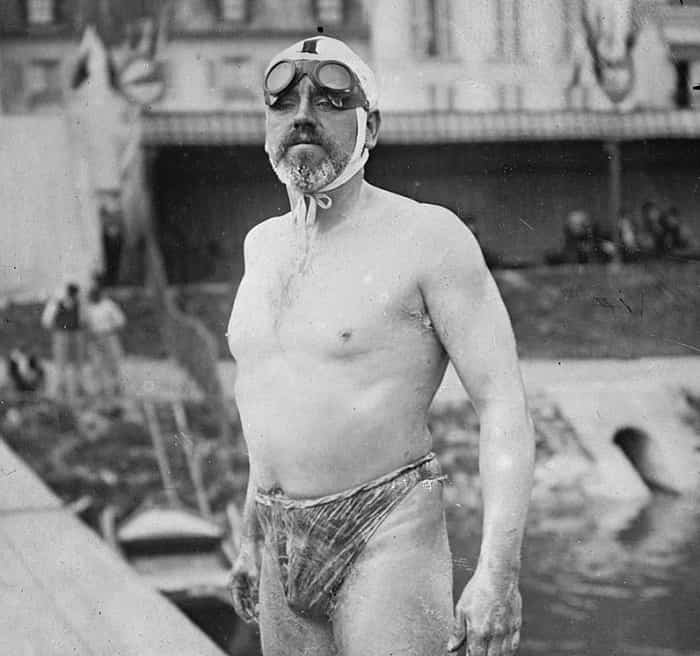
The overall shape and design of this particular piece of swim equipment—two big sockets and an elastic band around the head—hasn’t really changed much since then. The materials, size, colors and marketing, on the other hand, absolutely have.
In 1935, buoyed by the rising popularity of scuba diving and the need for better masks and goggles, inventor Walter G. Farrell patented an “underwater eye protector” designed to help divers swim around that grandfathered many of the current goggle designs.
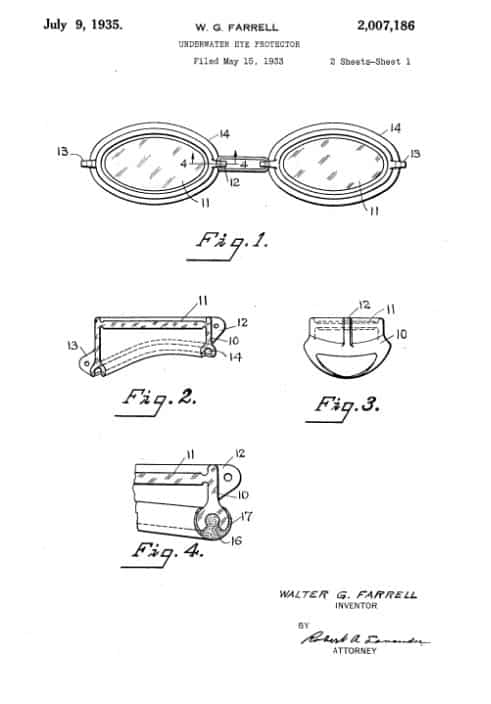
In 1968 the modern swimming goggles was first introduced to the competitive swimming masses with limited enthusiasm. The “clear view” goggles were advertised in Swimming World Magazine—at only $2 a pair—and promised to help swimmers forgo the eye irritation that was common with extended bouts of training in chlorine (and pee) infested pools.
While they seem like a no-brainer now, at the time many swimmers had a hard time keeping them on their heads while performing starts and turns (caps also weren’t that popular then either), and simply found them not to be comfortable on their heads.
In modern competition it was the breaststroker David Wilkie of Great Britain (a huge inspiration of the late Victor Davis, as it were) who put on a pair of goggles (and a cap!) at the 1970 Commonwealth Games.
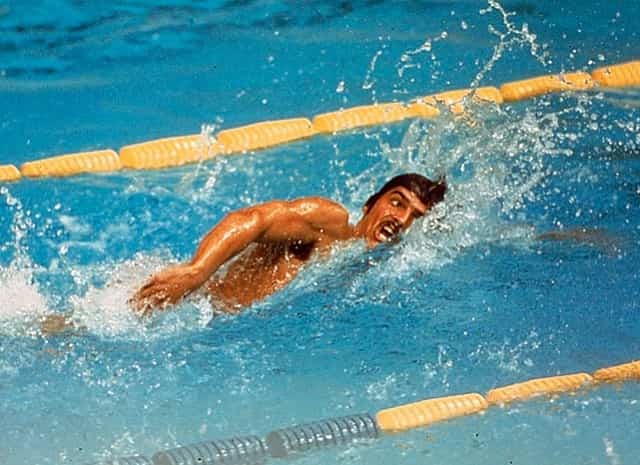
They were by no means an overnight sensation, with many swimmers continuing to swim though the 1970’s and 1980’s without them, not the least of which was Mark Spitz, who won 7 Olympic gold medals in 1972 at the Munich Olympics with no goggles, but a devastating mustache.
During the 1970’s the ubiquitous Swedish goggles were developed by Melsten AB, a Swedish swim manufacturer, giving swimmers the difficult decision between looking cool or not having sore orbital bones (as you can guess, swimmers chose the former).
As swimming gear became more profitable, more and more companies began offering swim goggles, helping fuel an ever-growing swimming apparel business that does billions of dollars annually.
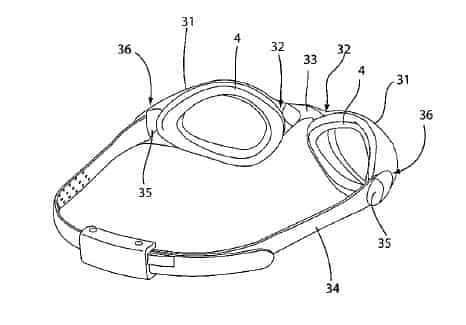
Why Swimmers Should Wear Swim Goggles
I get the desire to go for a more purist approach when it comes to what you wear when you hit the local lap pool–I don’t need no stinking goggles! Back in my day I walked thirty kilometers to school, uphill in both directions!
But there are two very good reasons why swimmers should be strapping when they hit the water:
1. Goggles help us see better underwater.
Sounds super obvious, right?
If you’ve ever had your goggles fill up during a race you know what I am talking about—our eyes aren’t well designed to see underwater.
Our eyes weren’t designed for seamless sight from air to water (unlike penguins), and goggles help make up for this deficiency so that we can better see under the water. (If you want to know why our eyes have a hard time adjusting to the water, read this breakdown.)
Goggles help us better see that upcoming wall so that we can properly judge our flip turn, and also helps us dodge that errant lap swimmer who has head-up breaststroke’d his way into our lane.
2. They protect your eyes from irritation.
Now, for another, equally important and significantly nastier reason to wear swim googles—they protect your eyes from irritation that comes from whatever the pool is treated with, and whatever the pool is treated with is reacting with.
As the CDC recently disclosed, it’s not always the chemicals in the water that are making our eyes get all sensitive and blood-shot after spending hours in the water. It’s the pee, sweat, and, uhmm, other stuff that finds it’s way into the water and starts reacting with whatever the pool is treated with.
The nitrogen in the urine combines with the chlorine and it forms what’s known as chloramine and it’s actually chloramine that causes the red eyes,” says Michele Hlavsa of the Center for Disease Control.
Oh, good!
Yeah, wearing goggles won’t make the other stuff that is happening in the pool magically go away, but at least you won’t be sitting in the car on the way home rubbing your eye balls at 6,000 RPM because they are stinging and red.
(If this isn’t also the best argument to stop peeing in the pool I don’t know what else would change your mind.)
The Swim Goggles Buyer’s Guide
Okie dokie, so now that we have delved into the history of the swim goggle, and gotten a better understanding for why we use them, here is what you need to know before spending your hard-earned cashola on swim goggles.
The breakdown includes my swim goggle recommendations born out of nearly three decades of competitive swimming experience (sweet molasses I’ve gotten old…).
When you are in the market for a pair here are the 3 key considerations:
1. How the goggles fit on your face.
Faces come in different sizes, and consequently, there are all different types of different shaped goggles out there. The goggles you choose are going to be strapped to your face, digging in and around your eyeballs, for hours at a time. So yeah, fit and comfort is important!
And this basically starts and ends with your nose. When picking up a new pair of goggles you want to make sure that it comes with an adjustable nose piece, or multiple nose pieces with varying lengths.
Why is this so important?
Because that’s where a majority of the problems arise when it comes to leaking and comfort: When the nose strap is too wide the goggles leak; when it’s too narrow the corners of the socket pinch the side of your nose.
Goggles with a fixed nose bridge simply don’t fit everyone the same.
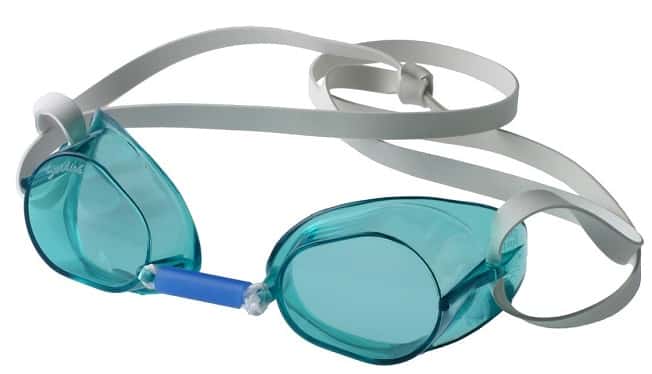
The major benefit of the classic Swedish goggles is that they are highly adjustable; they come with string to tie up the nose bridge at a length of your choosing.
Experienced swimmers know that with Swedes the best way to go is to just lop off a piece of the band that comes with the goggles and use it as a nose piece that you can instantly tighten or loosen based on your nose width.
The latex rubber feels much better against your nose compared to the string– unlike some of the newer high end goggles which come with plastic nose bridges that you cannot adjust.
The only downside with these goggles? The thin latex rubber straps wear quickly, which will snap on you at an inopportune moment after a couple of months or even weeks of consistent use.
Unless you know for sure that a specific goggle fits, make sure they have a nose piece that you can adjust according to your special snowflake of a face.
2. The lens color of the goggles.
Whether you swim indoors or outdoors matters when it comes to lens color. Or even how well lit your pool is.
I train regularly at the local YMCA pool, which, when it is dark outside, is unbelievably dark indoors as well. The moment my dark-lens goggles get even a little bit fogged up other swimmers and the pace clock quickly get lost in the mist.
These goggles are awesome for days like the one below, where dark or reflective lenses keep both water and the sun out of your eyes:
While dark goggles will make you look like a badass while swimming indoors, and a bit like a rapper wearing sunglasses at the club, know that dark lenses + limited anti-fog effectiveness means that you could soon be swimming blind.
Which brings me to another point about choosing a lens color…
Keep in mind that your goggles will lose their anti-fog over time, meaning that dark-lens goggles will get darker. Although every goggle manufacturer says that their goggles are anti-fog (hahahahahaha!), every serious swimmer knows that this is the biggest myth being perpetuated by them.
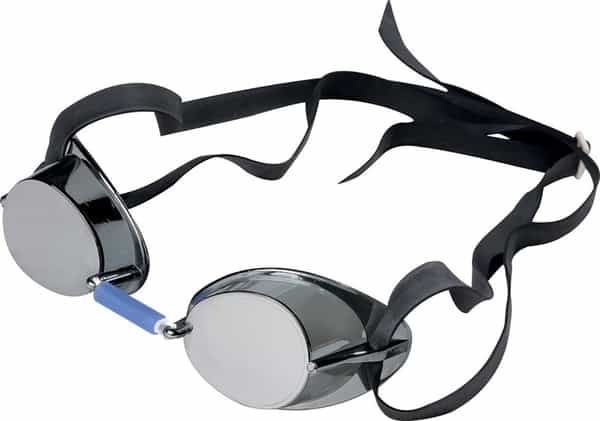
Sure, they’ll work great for the first couple weeks, but it will wear off, right around the moment you use your thumbs to wipe away an errant bead of sweat from the inside of your goggles.
3. The cost of the goggles.
For most competitive swimmers, a standard pair of Swedish goggles are not only stylish and comfortable, but they are also very cheap. (Usually, you can pick up a 3-pack of different lens colors for around $20.)
The old-school Swedish goggles can be a pain in the butt to put together, especially if you don’t fancy yourself as being that crafty, but the price point on them is impossible to beat.
It’s only been in recent years that the premium, high end race goggles have come onto the market, with goggles like the Speedo’s FastSkin12 Elite 9000 and competitors flooding the swim-related websites and magazines.
These goggles run upwards of $50 and are featured as part of a “total racing system” that is supposed to make you more streamlined and efficient in the water. If you are of the school of thought that “look good feel good” works, than by all means go for it.
Swim goggles have also gone into “high tech” mode, with several goggles manufactured by FORM and FINIS offering a digital heads-up display inside the goggle lenses. Needless to say, having all of your swim training metrics broadcast live while doing laps is pretty cool, but these advanced swim tracking features don’t come cheap, with smart swim goggles starting at $199.
Ultimately, swim goggles are fairly inexpensive, and you can make them last even longer with sprays to extend the lifespan of the anti-fog coating and using a sturdy swim goggle case to protect your goggles when you leave the pool.
The Top Swim Goggles on the Market
This list is by no means comprehensive, but they are the swim goggles that I recommend most often because of a variety of reasons, including:
- Comfort: These goggles survived the “hey, these don’t hurt my face when I wear them for longer than 4 minutes!” test.
- Durability: They lasted longer than two weeks of heavy, sustained use with zero care (i.e. not “rinsing” after use as instructed).
- Style: They made me look (and therefore feel) like a chlorinated gangster. Look good, feel good, swim good!
Let’s do this!
TheMagic5 Swim Goggles [$$]
Swim goggles have come a long way in recent years in terms of tech, and nowhere is this more apparent than TheMagic5 Swim Goggles, the world’s first truly custom-fitted swim goggles.
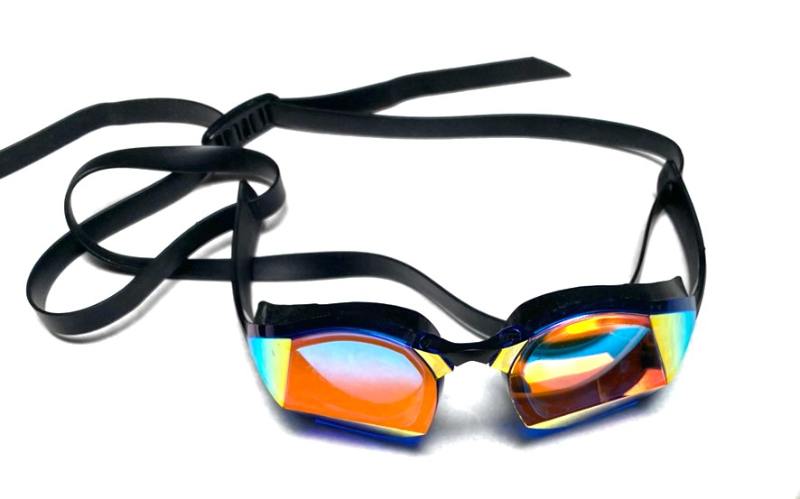
TheMagic5 Swim Goggles are paired with an app that takes a scan of your face, generating a 3D map with specific measurements of your eyes, eye socket, nose bridge width, and more. Using this 3D scan, TheMagic5 builds a custom goggle gasket, and a week or two later, a set of brand new, one-of-one swim goggles show up on your doorstep.
Because of the custom gasket, TheMagic5 Swim Goggle doesn’t leak and is much more comfortable for extended swimming as it does not have to be worn as tightly or snugly as regular swim goggles.
The swim goggles also look fantastic, with a diamond-shaped lens for excellent peripheral vision, adjustable silicone straps, and a large variety of tint and color options.
+ Custom fit for your face
+ Comfortable for extended wear and reducing headaches
+ Extremely slim lens profile
+ Available in 11 colors/tints and discounts on bundles
Speedo Vanquisher 2.0 [$]
The Speedo Vanquisher 2.0, Speedo’s best-selling goggles for lap swimmers, gets my vote for best “beginner” goggles simply because of their durability. I have Speedo Vanquishers over seven years old, and the straps are still as solid as they were when I bought them.
My only complaint is that they have those plastic nose pieces holding the sockets together. I’ve had a couple of these snap off suddenly, likely because of how tight my goggle straps were fastened on my melon.
Speedo also makes the Vanquisher for swimmers who wear prescription lenses.
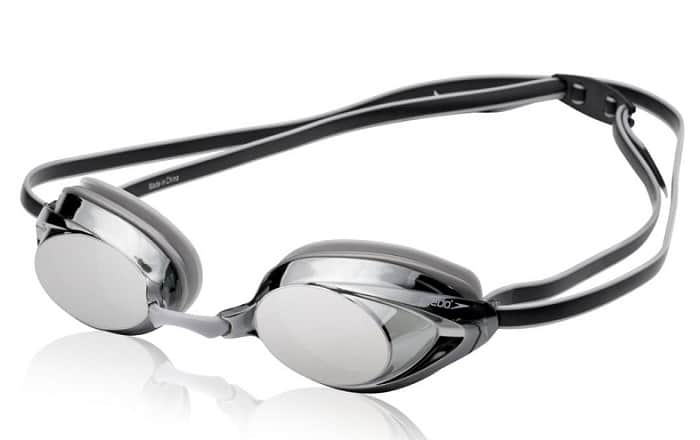


TYR Socket-Rocket [$]
These are one of my favorite pairs of goggles, and I currently have a set chilling my swim bag. They look good, they are cheap ($15-20 per pair), and you can quite easily adjust the length of the nose piece by cutting off an end of your straps.
The TYR Socket Rockets come in a variety of colors and lenses, which is great for you indoor/outdoor swimmers. The only drawback is that the straps don’t last as long as the Vanquisher’s.
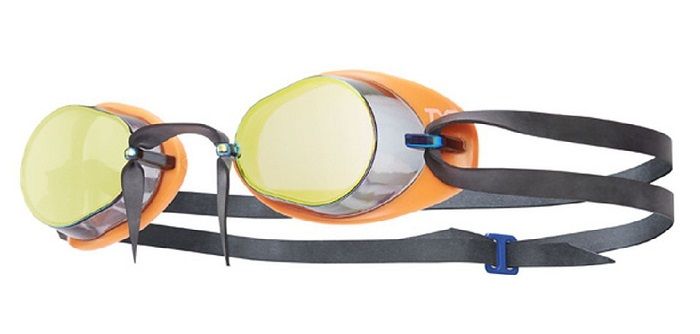


The Speedo FastSkin3 Elite [$$$]
Speedo goggles run the course from beginner to elite, and these bad boys are the in the latter category. They take themselves pretty seriously, with the promotional material reading that the goggles are “a key weapon in the armory of the serious swimmer.”
The reason that they are called “FastSkin” is because they are designed to be worn with the matching tech suit and even a Fastskin swim cap.
Combined altogether the costs start to get extremely serious, but if you have the cash to throw around why not, right? (You can learn more about the Fastskin3 Elite goggles in our full review of them here.)
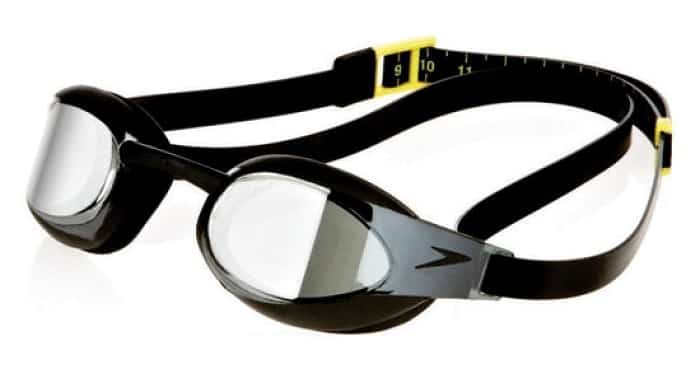


Arena Cobra Ultra Mirror Goggle – [$$$]
Arena’s contribution to the elite racing goggles is a good looking one–the Arena Cobra Ultra Mirror (full review). It is the most expensive pair of goggles on this list, coming in at around $50 per pair.
They are worn by 100m breaststroke world record holder Adam Peaty of Britain, feature a slim design that helps with hydrodynamics, and has a silicone strap, which means they will last and not snap at an inopportune time (i.e. when you are standing behind the blocks).
The Ultras are an excellent racing goggles for swimmers who want something low-profile, comfortable, and leak-proof.
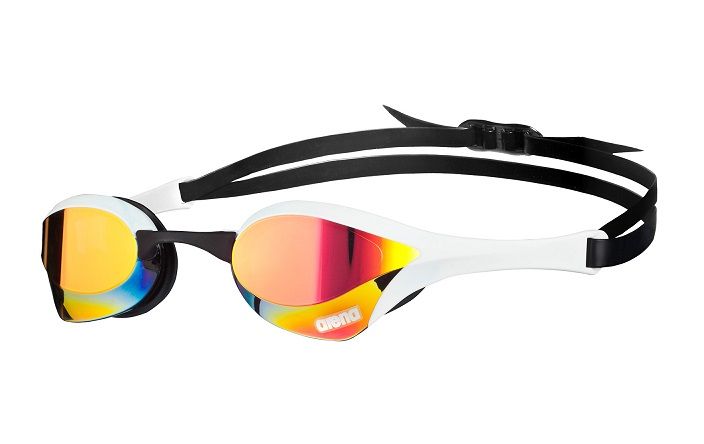


The Takeaway
At the end of the day, your swim goggles aren’t going to be the thing that separate first from second place in the pool–it’s just going to keep the gunk in the pool from irritating your eyes and better help you see the walls and other swimmers.
Head down to your local swim shop and put some different goggles on your face until you find one that fits and that is comfortable.
After all, you want to not only kick butt in the water, but be comfortable and stylish while doing it as well.

